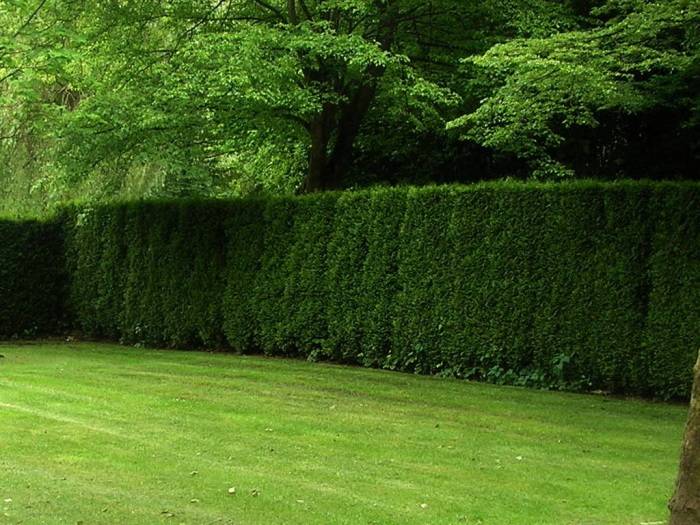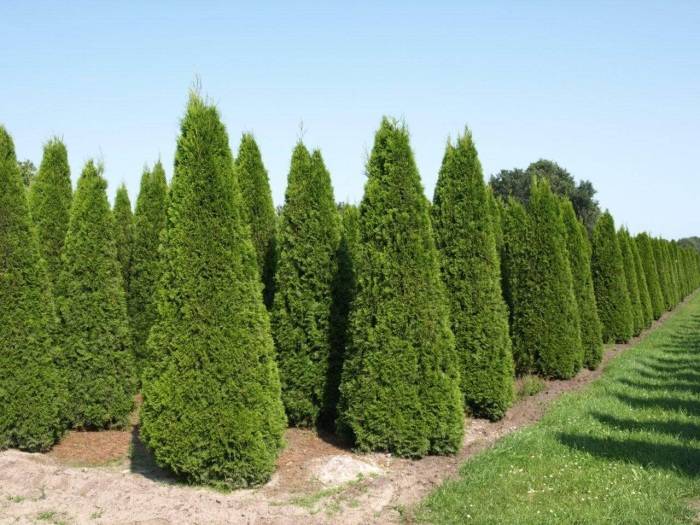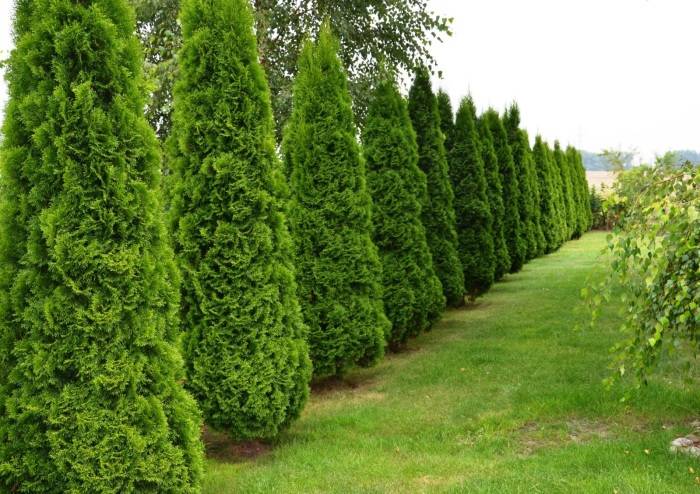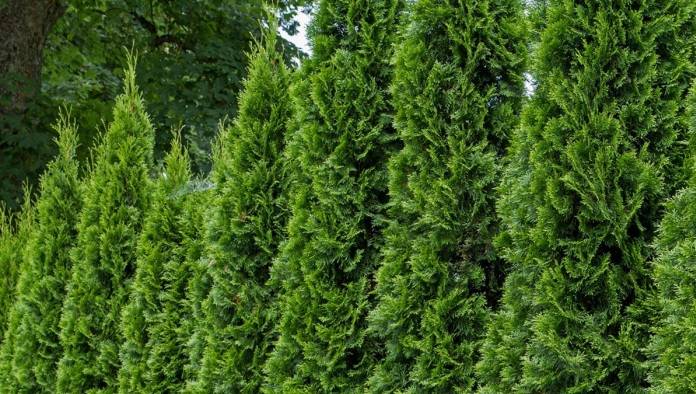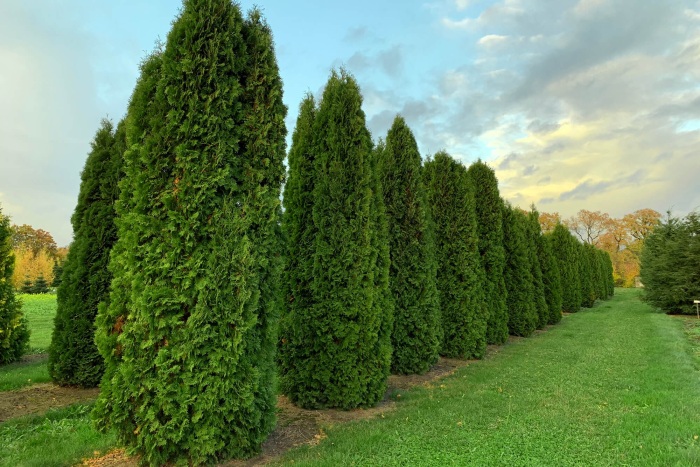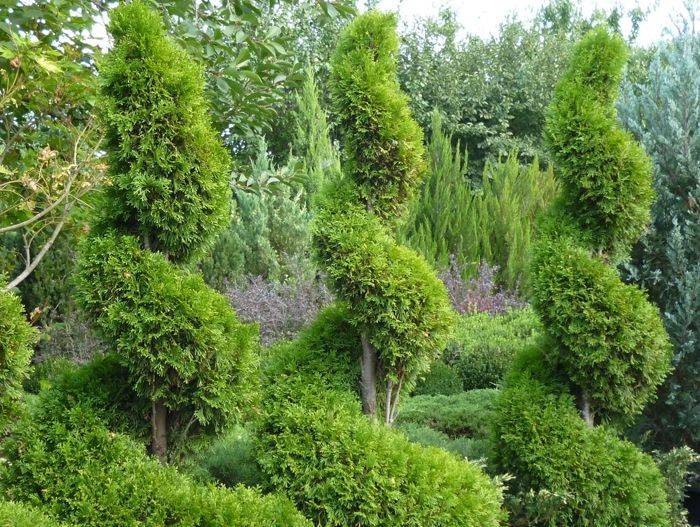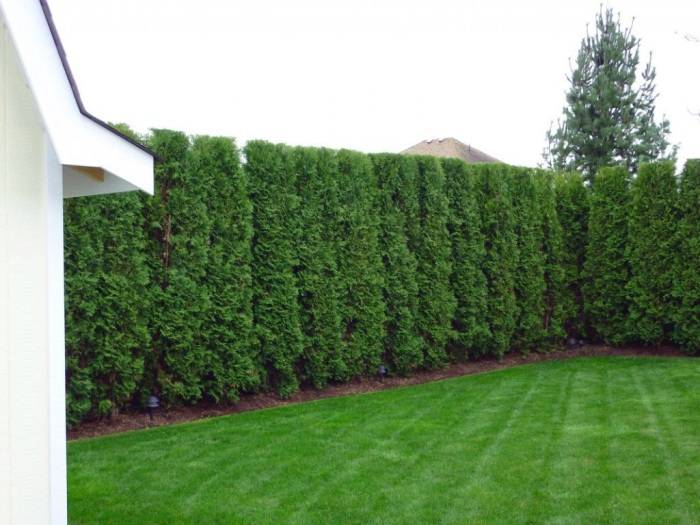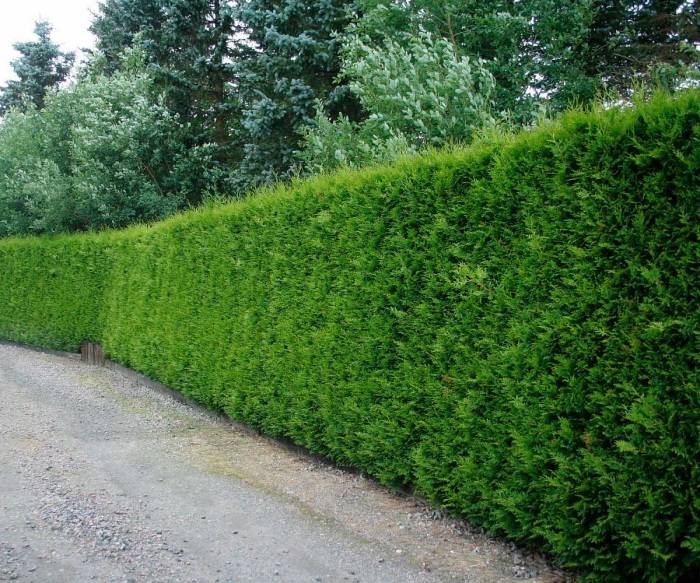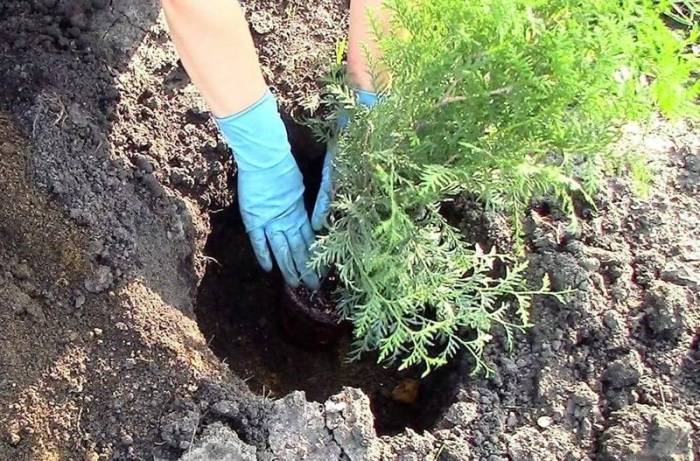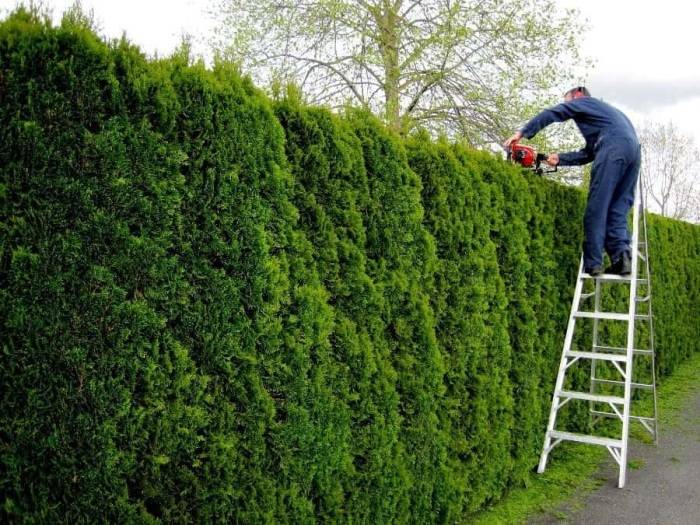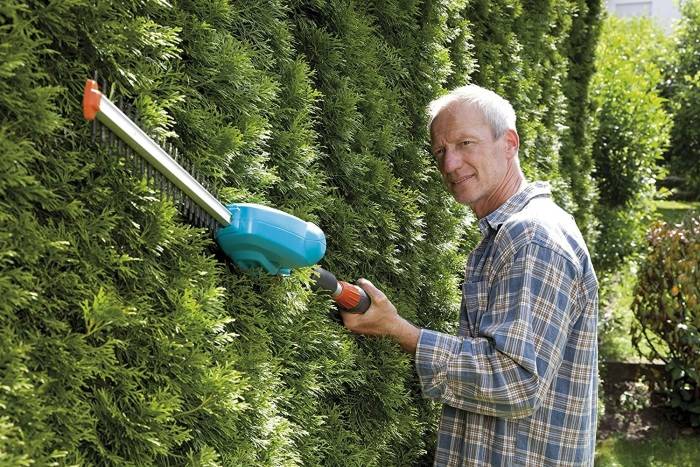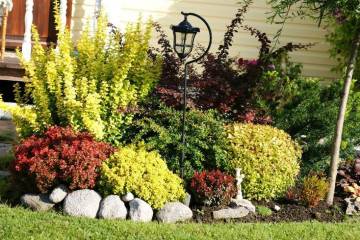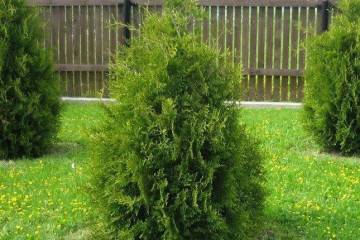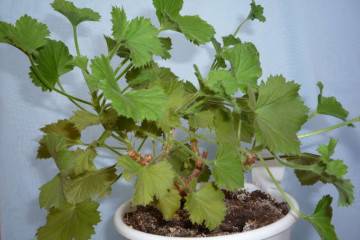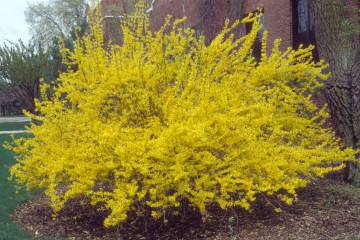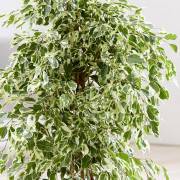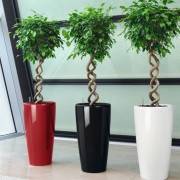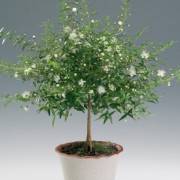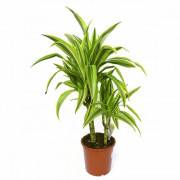Thuja hedges - pruning and shaping
Content:
An excellent protection of the site from prying eyes is a thuja hedge. It is not only practical enough, but also beautiful. This coniferous plant lends itself well to pruning, so this green fence can even be given a complex shape. Thuja is an evergreen shrub, so the fence will retain its decorative effect not only in summer, but also in winter.
What varieties of thuja are best for making hedges
When choosing varieties of thuja for a hedge, which are best used, few gardeners know.
There are really few of them. The most popular are described below.
Brabant (Thuja Occidentalis Brabant)
The name comes from the name of one of the historical provinces of the Netherlands - Brabant. This variety can grow both as a tree and as a shrub. Outwardly it resembles a cypress. It comes from the western thuja, which is widespread throughout the world. This ephedra can grow in nature up to 38 m, and on average - about 20 m. The cultivated variety Brabant reaches a height of 4 m, which is quite enough for a hedge. Outside the city, this species grows higher. A single tree can grow up to 20 m in height and 4 m in diameter.
Brabant is a fast growing variety. Annual growth is about 10 cm in crown diameter and 30 cm in height (and up to 50 cm in young plants). Frost-resistant variety, covers climatic zones 2 to 7. It tolerates temperatures down to -40 ° С well.
Thuja Brabant needles are light green. The color of the cones and peeling bark is brown.
Smaragd (Thuja Occidentalis Smaragd)
The name comes from the word "smaragd", which in ancient times meant emeralds (and other green stones). Emerald is the best word to describe the color of the needles.
This variety was bred in Denmark. The crown of a conical shape does not exceed 120 cm in diameter. The height of an adult thuja is on average 4 m.Some emerald beauties can grow up to 6 m.
The needles of this variety retain their emerald green color even in severe frosts. This is a feature of the variety. But if the needles suddenly turned brown in winter, then something is wrong with the thuja.
The downside of Smaragd is a weak annual growth, only 10 cm. Due to the small increase, pruning of thuja Smaragd is rarely required.
Thuja Smaragd has several interesting varieties:
- Light, in which green scales alternate with cream;
- Variegata. White scales are located at the tips of the twigs;
- Golden with golden needles at the tips of the branches and at the top.
Fastigiata (Thuja occidentalis Fastigiata)
This variety of German selection is very similar in appearance to a cypress. Fastigiata is a large variety, the crown diameter can reach 3 m. The height of such a thuja is up to 15 m. The variety is long-lived, in one place it can grow for more than 250 years.
Fastigiata's form is columnar or conical. During the year, the plant grows in height up to 35 cm. The width of the crown increases to 8 cm per year.
The needles can be of different shades of green: from light to dark.
The branches are tightly pressed to the trunk, the crown is thick and dense. For the formation of a thuja hedge, this is a big plus.
Yellow Ribbon (Thuja Occidentalis Yellow Ribbon)
A beautiful pyramidal thuja with a changeable color of needles. In summer, it is green and only the tips are golden. In autumn and winter, the needles lose their green tint and turn yellow-brown. Spring adds orange strokes to her.
The tree is compact, its height rarely exceeds 2.5 m. It stretches by 10-12 cm per year.
Frost-resistant variety, easy to care for. A living fence made of thuja Yellow Ribbon looks very decorative.
Holmstrup (Thuja Occidentalis Holmstrup)
A compact variety that rarely exceeds 3 m in height and 1.3 m in diameter. The crown forms a regular conical shape. Therefore, the advantages of this variety include the lack of the need for regular pruning.
Throughout the year, the shade of the needles is a constant saturated dark green. The bark and cones are dark brown in color.
Columna (Thuja Occidentalis Columna)
This North American variety of thuja is tall and narrow in shape. The needles are bright green, but in winter they lose this shade and turn brown. This is not to be feared, in the spring the tree will turn green again.
It is growing rapidly, for a year the growth will be 0.3 m.The crown is up to 3 m in diameter, the height of this thuja is up to 10 m.
In one place it can grow for about 200 years.
The rough bark is reddish brown.
The form set by the breeders does not need to be constantly maintained.
Thuja Smaragd hedge
One of the best varieties of thuja for hedges is Smaragd. Unlike many varieties, it also tolerates some shading. A fence made of thuja Smaragd will not lose its decorative effect at any time of the year, because this variety does not turn brown for the winter.
In one place, this tree can live up to 100 years, which is also an absolute plus.
The formation of thuja Smaragd is possible not only in a classic cone, but also in more interesting ones, for example, a spiral.
Smaragd does not tolerate snow drifts, branches must be tightly attracted to the trunk so that the poured snow does not break them.
Thuja Brabant fence
Many gardeners call Brabant the best thuja for forming a living fence. And that's why:
- Brabant is the most unpretentious variety among thujas;
- most easily tolerates pruning and quickly recovers;
- less sensitive to spring burns than Smaragd, but still better to cover;
- grows on almost any soil;
- frost-resistant;
- gets along with many garden plants, especially with the bladder, juniper, hosta, astilba, etc.;
- prefers shady areas unlike many other varieties.
Of the minuses of the variety, flower growers call that in winter the needles become reddish-brown.
Green wall care
In order for the green fence to perform its functions (decorate and protect), proper care must be organized behind it, the essence of which can be summarized as follows:
- apply mineral fertilizers during planting, the amount of which should be enough for the first two years of thuja's life in a new place;
- if possible, shade the hedge from the scorching sun in summer and spring;
- water as the soil dries, but not excessively;
- in the first winter in a new place, they must be covered;
- the root system of the thuja is shallow, so the soil surface under it needs to be mulched.
The nuances of caring for young plants
Any young plants are more sensitive to unfavorable conditions than mature ones. Thuja are no exception.
Young thuja need to be grown in areas protected from direct sun. Illumination should be good, but the sun is scattered. This is one of the basic rules for planting these plants.
It is advisable to plant young thuja on fertile soils, while mature specimens are less sensitive to the composition of the soil. A mixture of sand, peat and turf works well.
If young plants were planted in late spring or summer, then they need fairly frequent watering, at least once a week, 8-10 liters (bucket) under each tree. In the heat, thuja needles actively evaporate moisture, so its reserves must be constantly replenished, otherwise the plant may die. If the temperature is above 30 ° C, then you can water it twice a week. More often it is not necessary, otherwise the thuja will start to hurt.
Within a month after planting in open ground, if the weather is hot, sprinkle irrigation. This agrotechnical procedure is carried out after sunset or long before sunrise, so that moisture has time to evaporate from the needles.
How to make a fence from a thuja
A thuja hedge is capable not only of itself serving as a fence of the site, but also of covering an unsightly fence. But in order for it to perform its functions, you need to know exactly how to prune the thuja, how to water and how to fertilize for more active growth.
To make a thuja hedge, you need to follow the following rules:
- the place is chosen not in direct sunlight, but slightly shaded;
- it is better to buy seedlings in the nursery, so you can be more or less sure that the thuja is of the right variety. But you can grow it yourself. In order for the plant to retain varietal characteristics, it is propagated by cuttings. Seed propagation is also possible, but some of the properties of the variety may be lost;
- it is better to plant four-year-old plants, they take root more easily in a new place;
- groundwater in the place where it is planned to plant thuja should not come close to the surface.
At what distance to plant trees
At what distance to plant thuja from each other depends on how many rows are planned in the hedge, as well as on the presence of a conventional fence. If such conifers are planned to be planted along the fence, then the minimum distance between them should be 70 cm. When planting hedges in one row, it is recommended to leave about a meter of free space between the plants.
The depth of the planting hole should be 70-80 cm, depending on the variety. The root collar is not buried in the ground.
After about a month of planting, mulching is done with peat, sawdust or needles.
How to feed thuja for growth
Before planting, it is necessary to prepare the soil for the thuja. To do this, mix garden soil with 3 kg of wood ash, 1 bucket of humus, 1 bucket of compost. If you just add these top dressing to the planting hole, you can burn the roots, so ash, humus and compost are mixed with the soil.
How to feed thuja for growth? Immediately after planting, the green beauty can be watered with a solution of the zircon preparation. It not only stimulates root formation, but also has antifungal and antiviral properties.
For 2-3 years after planting, the conifers do not need to be fertilized, the top dressing introduced into the planting hole will be quite enough for this time. If the thuja shows signs of wilting, then the nutrients can be added earlier.
The choice of mineral or organic fertilizer depends on how quickly you need to act. Mineral dressings start working immediately after application. They are an ambulance for thuja, but they do not last long.
Organic matter acts more slowly, nutrients are released gradually, so this feeding is enough for a longer time.
The best fertilizers for these trees:
- agricultural growth stimulator, which contains manganese, molybdenum, nitrogen, phosphorus, potassium, etc .;
- ammonium nitrate containing sulfur and nitrogen. Promotes the formation of a more lush and vibrant crown. For feeding, 30 g of nitrate is diluted in 10 liters of water. Each plant requires 5 liters. They are brought in in the spring;
- bone meal, which contains nitrogen, potassium, phosphorus, calcium. 150 g of powder is applied under each tree, scattered around the trunk and embedded in the soil. For heavy clay soils, this organic matter in an amount of 0.5 kg is diluted in 10 liters of water and slightly warmed up for better dissolution. The bone meal solution is not brought to a boil.
How and when to trim thuja
For thuja, pruning and shaping are mandatory procedures. Without this, the tree will stretch upward, the crown will become loose with gaps. There are the following types of trimming:
- sanitary, i.e. removal of diseased and dried branches;
- shaping to change the shape of a plant (create a topiary), thinning the crown and limiting thuja in growth;
- corrective to maintain a given shape.
When to cut thuja so that it is useful for them? The optimal haircut is considered twice a year - in spring and autumn. You can correct the shape of the topiary from early spring to mid-autumn.
The cutting frequency is selected depending on the variety.
How to cut thuja: tools
Necessary accessories:
- secateurs;
- sickle;
- garden shears (both mechanical and power driven);
- trimmer brush cutter.
Gloves will definitely be required to protect your hands.
For young plants, it is best to use regular garden shears. For large thujas that form an array of hedges, an electric tool is suitable, mechanical scissors are difficult to cope with here.
Before work, garden tools must be disinfected.
How to cut the thuya correctly:
- do not cut in wet weather, this can provoke fungal diseases. It is optimal to prune on a cloudy but dry day;
- you do not need to cut too much, especially if you have not cut it for a long time. When pruning, more than 30% of the green mass should not be removed;
- bare and dry branches are removed completely;
- the branch is cut 1-2 cm from the bud.
How to trim a globular thuja
Many novice gardeners are wondering how to trim a spherical thuja. In this case, you need to add a special stencil made of metal mesh to the above tools, thanks to which the shape will be as correct as possible, so it will be easier to cut.
And there are also varieties that by nature tend to a round shape, it is easier to care for them.
In general, thuja is one of the most successful plants for creating a hedge. It is unpretentious, well formed and retains its decorative effect throughout the year. The main thing is to properly plant and provide the tree with care.
